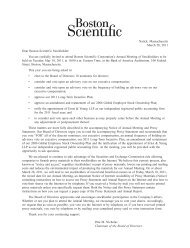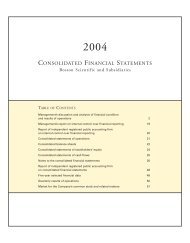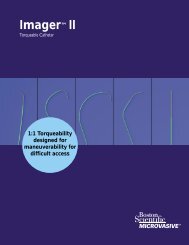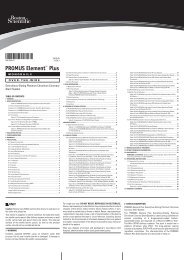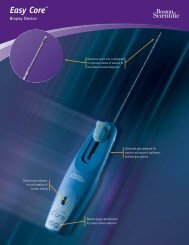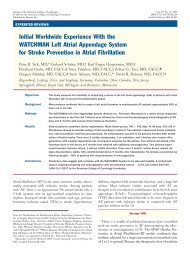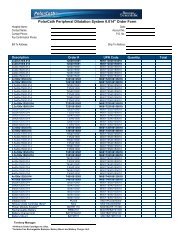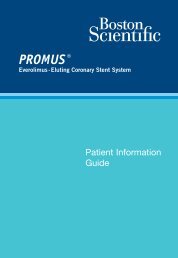Physician Reimbursement Primer for Cardiac ... - Boston Scientific
Physician Reimbursement Primer for Cardiac ... - Boston Scientific
Physician Reimbursement Primer for Cardiac ... - Boston Scientific
Create successful ePaper yourself
Turn your PDF publications into a flip-book with our unique Google optimized e-Paper software.
Chapter 3<br />
Since there are more than 200 pacemaker models in service at any given point, and a<br />
variety of patient conditions that give rise to the need <strong>for</strong> pacemakers, the question of the<br />
appropriate frequency of monitorings is a complex one. Nevertheless, it is possible to<br />
develop guidelines within which the vast majority of pacemaker monitorings will fall, and<br />
contractors should do this, using their own data and experience, as well as the frequency<br />
guidelines that follow, in order to limit extensive claims development to those cases<br />
requiring special attention.<br />
Pacemaker Clinic Services<br />
1. General<br />
Pacemaker monitoring is also covered when done by pacemaker clinics. Clinic visits may<br />
be done in conjunction with transtelephonic monitoring or as a separate service;<br />
however, the services rendered by a pacemaker clinic are more extensive than those<br />
currently possible by telephone. They include, <strong>for</strong> example, physical examination of<br />
patients and reprogramming of pacemakers. Thus, the use of one of these types of<br />
monitoring does not preclude concurrent use of the other.<br />
2. Frequency Guidelines<br />
The frequency of clinic visits is the decision of the patient’s physician, taking into account,<br />
among other things, the medical condition of the patient. However, contractors can<br />
develop monitoring guidelines that will prove useful in screening claims. The following are<br />
recommendations <strong>for</strong> monitoring guidelines on lithium-battery pacemakers:<br />
Medicare’s Frequency Guidelines <strong>for</strong> Pacemaker Clinic Services<br />
• For single-chamber pacemakers—twice in the first 6 months following implant, then<br />
once every 12 months<br />
• For dual-chamber pacemakers—twice in the first 6 months, then once every 6<br />
months<br />
Pacemaker—Temporary<br />
At this time there is no specific Medicare National Coverage Determination (NCD) <strong>for</strong><br />
temporary pacemakers. It is important <strong>for</strong> medical providers to check with their local<br />
Medicare contractor or non-Medicare payers to determine patient coverage and<br />
coding/billing guidelines.<br />
Note: Search the Medicare Coverage Database on the CMS website<br />
(http://www.cms.hhs.gov/mcd/search.asp) <strong>for</strong> coverage descriptions and updates.<br />
Medicare NCD <strong>for</strong> Implantable Cardioverter Defibrillators<br />
(ICDs) 8<br />
Effective date of this version: January 27, 2005<br />
Implementation date: January 27, 2005<br />
Item/Service Description<br />
A. General<br />
The implantable automatic defibrillator is an electronic device designed to detect and<br />
treat life-threatening tachyarrhythmias. The device consists of a pulse generator and<br />
electrodes <strong>for</strong> sensing and defibrillating.<br />
Indications and Limitations of Coverage<br />
B. Covered Indications<br />
1. Documented episode of cardiac arrest due to ventricular fibrillation (VF), not due to a<br />
transient or reversible cause (effective July 1, 1991).<br />
16 <strong>Physician</strong> <strong>Reimbursement</strong> <strong>Primer</strong> <strong>for</strong> <strong>Cardiac</strong> Rhythm Management



